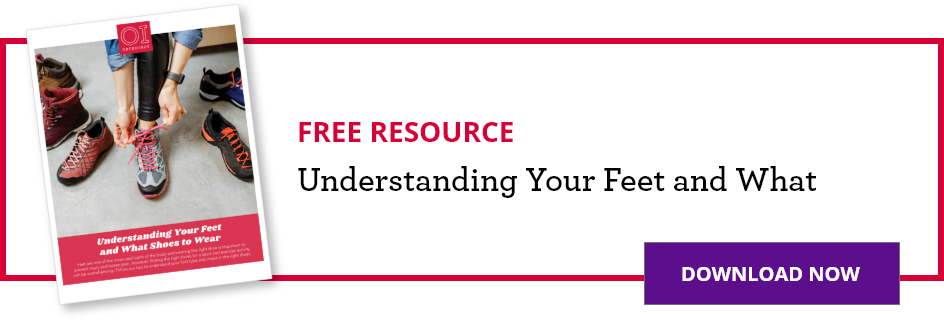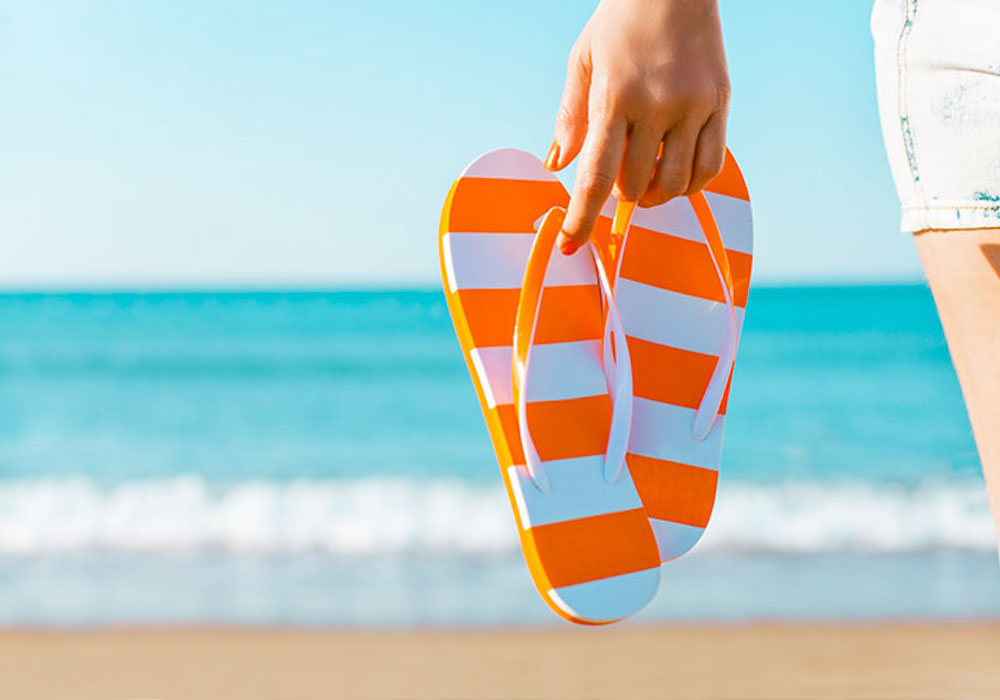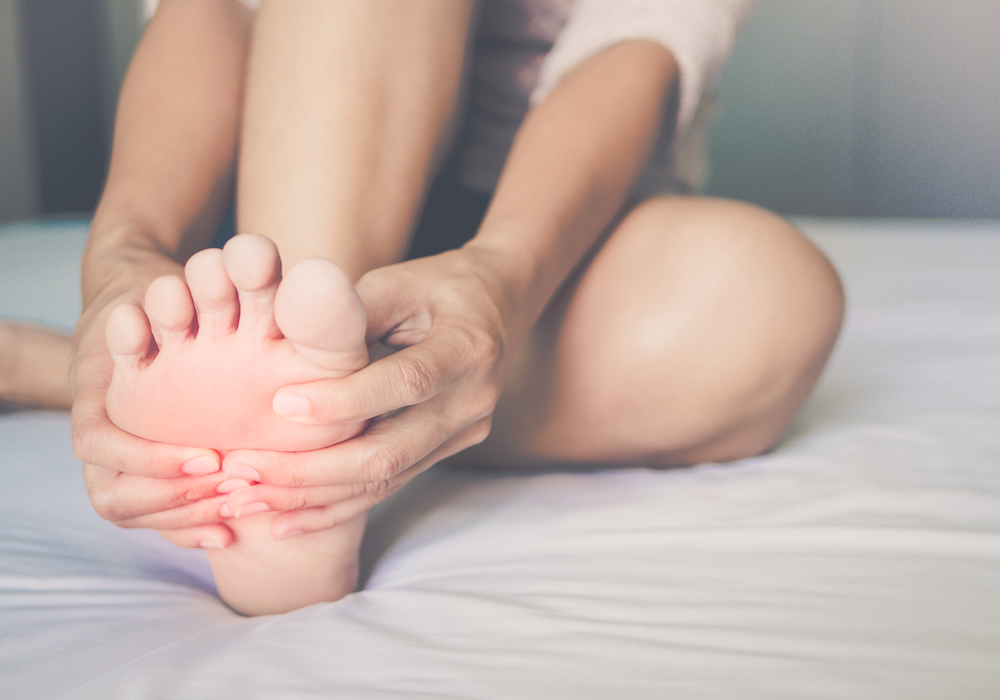THIS POST IS PART OF THE ULTIMATE GUIDE TO FOOT AND ANKLE INJURIES
OrthoIndy foot specialist, Dr. Michael Shea, explains the do’s and don’ts of flip-flops. Jimmy Buffett said it best, “I blew out my flip-flop, stepped on a pop-top, cut my heel, had to cruise on back home.”
Is it bad to wear flip flops?
Flip-flops have been labeled as the ‘Devil in Prada.’ However, flip-flops are actually a reasonable shoe-wear option when used sensibly. The knock on flip-flops has always been their lack of support, protection, cushioning and lack of functionality. The upside of flip-flops is that they are easy to wear.
There are several mechanical abnormalities that are caused by flip-flops. While wearing flip-flops, most people tend to increase toe-curling because it helps hold the shoe on. Short term, this may cause tendinitis; long term this could lead to a hammertoe deformity. This increased toe-curling also causes subtle turning in of the foot, which may cause plantar fascia tightness, ultimately leading to plantar fasciitis.
Flip-flops also cause a shorter stride in walking, leading to possible tightness of the Achilles, which may result in plantar fascia or Achilles tendinitis. Additionally, the absence of arch support could lead to plantar fasciitis, tendinitis or even stress fractures over long periods of time. Furthermore, the lack of significant cushioning may cause heel contusion and possible stress fracture.
While discussing the flip-flop conundrum I should also bring up two interconnected issues and the intimate relationship between them: the flip-flop structure and the foot structure.
Does wearing flip flops damage your feet?
All flip-flops are not created equal. In the glorious 70s, I remember the foam flip-flops that only lasted a few weeks before breaking. Flip-flops should be stiffer and only bend at the forefoot where the toes join the foot. Bending in other locations is not ideal but can be tolerated for short periods of time. Some arch support in the flip-flop is better than none. More cushioning is also better than less. Flip-flops with more than one strap to hold the shoe on are more stable to prevent blistering and shear forces on the foot. Accurate sizing is critical. There should not be any overhang; critical in all flip-flop wearing situations. Examples of better flip-flops or sandals include: Wolky, Chaco, Dansko, Rockport, Birkenstock and Teva.

Foot Structure
Eighty-five percent of people in our country have reasonably ‘normal’ feet; therefore, periodic flip-flop wearing is tolerable. The formula for flip-flop wearing is a function of the stress on your foot. This stress is composed of your foot structure and the activity you are engaging in. If you have a normal foot and your activity level is low, then flip-flop wearing is reasonable. A normal foot is defined as not having a significant high arch or flatfoot deformity with good motion of the ankle and hind foot joints. Low activity is generally associated with walking or standing on a level surface for a few hours at a time.
Walking in the mall for an hour with flip-flops on: good choice. Carrying your child up an uneven hill: bad choice.
There are over 2,000 ER visits per year for ‘shoe- related’ injuries. Flip-flop shoe wear gone wrong accounts for 25,000 visits a year or 12 percent of the total ‘shoe-related’ injuries.
Flip-flops should not be worn if you have any balance issues due to the risk of falling. Flip-flops should also not be worn during sporting events, especially any type of running, jumping or cutting due to their lack of support and protection. Try to avoid uneven ground due to the instability of the flip-flop on the foot. Do not wear flip-flops when driving, as they may come off and get caught in the brake or accelerator pedals. Do not wear flip-flops when doing yard work due to the risk of penetrating injuries from rocks, sticks, old pop tops and to prevent animal bites. Do not wear them when riding a motorcycle, around machinery or power tools (pretty obvious here).
Flip-flops are great at a pool or beach, as they protect from hot concrete and sand, but don’t forget the sunscreen. They are good for short distances, such as going to the store for a bottle of wine. Flip-flops are best on flat surfaces. Flip-flops are also great for public showers to avoid warts or fungus (just gross). Furthermore, flip-flops are good for showing off a recent pedicure or the sweet surgical skills of your orthopedic foot and ankle surgeon (me).
In conclusion, for a normal foot, flip-flops are a reasonable shoe wear option for sensible activity. And, as my mentor always said, “everything in moderation.”
Learn more about foot and ankle treatment at OrthoIndy.
Schedule an appointment
Your well-being is important to us. Click the button below or call us to schedule an appointment with one of our orthopedic specialists. If your injury or condition is recent, you can walk right into one of our OrthoIndy Urgent Care locations for immediate care. For rehabilitation and physical therapy, no referral is needed to see one of our physical therapists.





